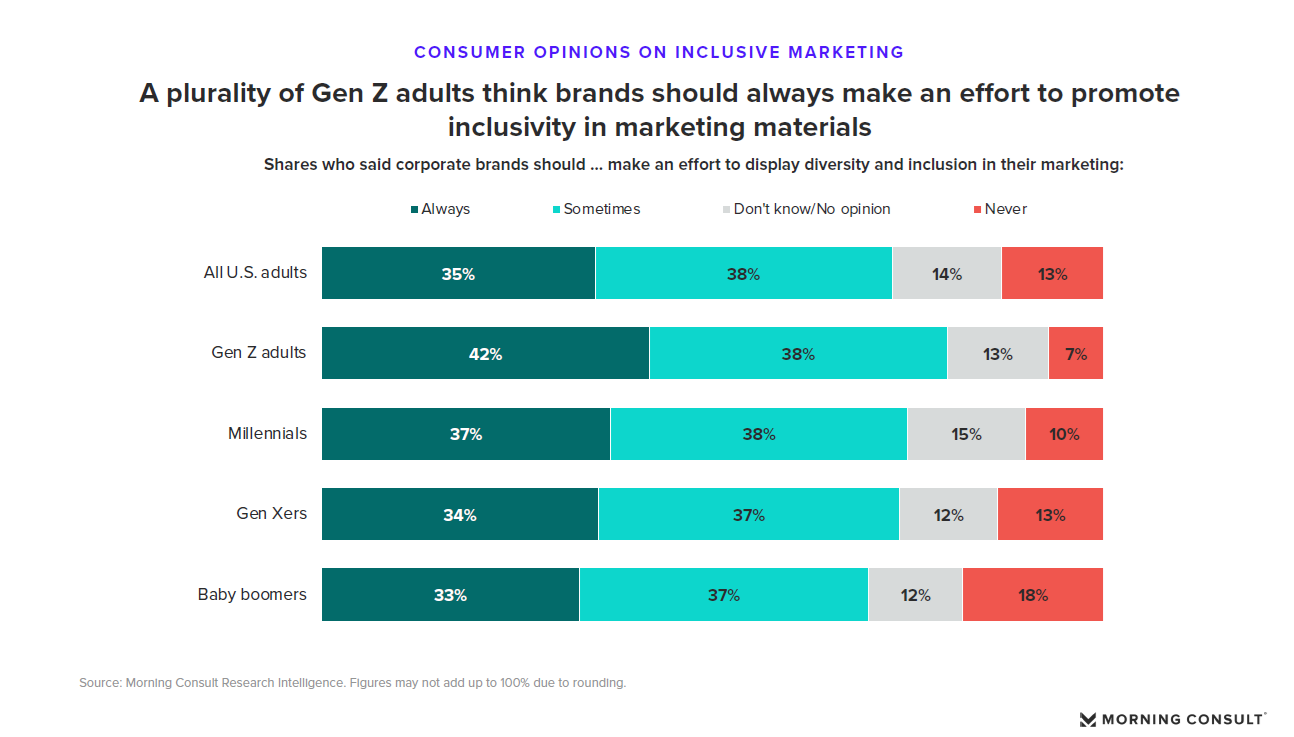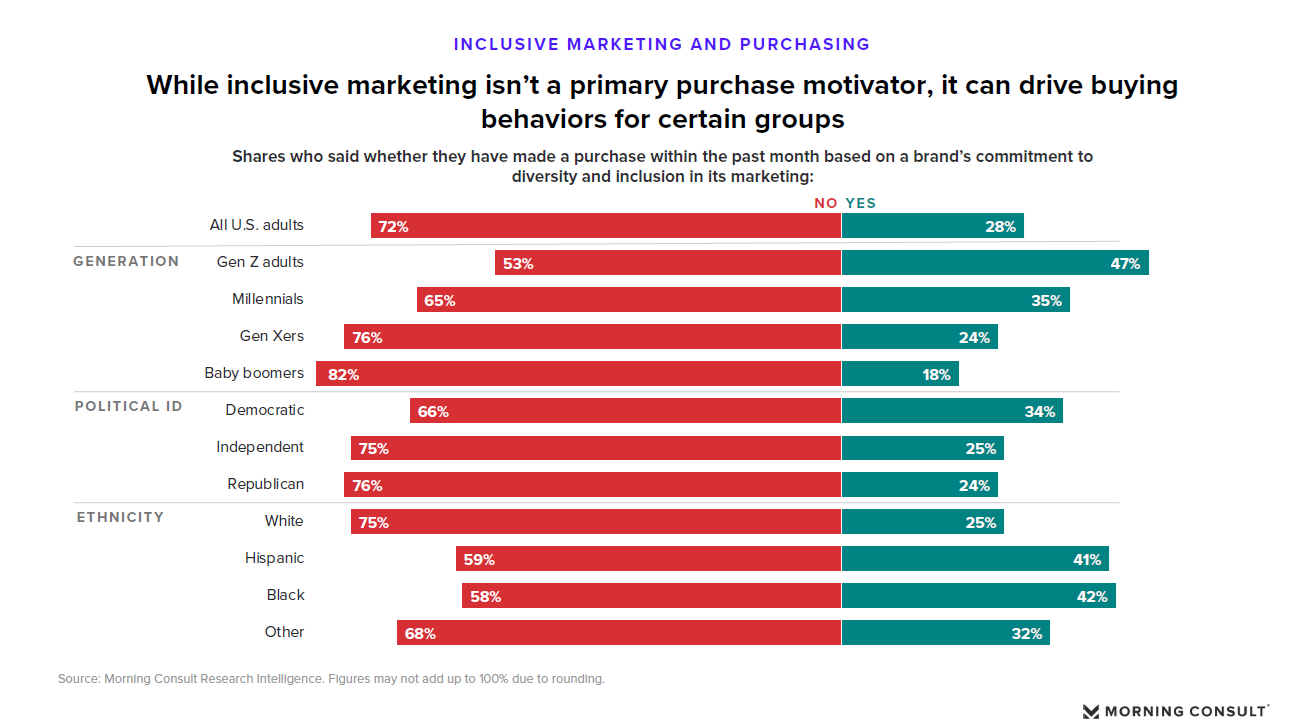By the numbers: Most Americans want brands to promote diversity. But there’s a big caveat.
Data from Morning Consult shows a mixed bag.

A new survey from Morning Consult found that American adults in every age demographic believe that corporations have at least some responsibility to display diverse, inclusive marketing. This data comes even as DE&I efforts at companies, universities and elsewhere are being criticized or even penalized by conservative legislators.
Still, despite evidence of some fatigue around empty DE&I gestures, the broader public remains supportive of marketing efforts that display the breadth of American diversity.
As you might expect, the number of people who support inclusive marketing increases as age decreases, but even 70% of Baby Boomers think companies should have inclusive marketing all or some of the time.

The major caveat to this data: The survey also found that despite these strong preferences, diverse marketing is one of the least important factors when it comes to swaying customers’ purchasing decisions.
Only 18% of survey respondents said that diversity and inclusion in their marketing was “very important” when determining where they shopped or what they bought. That put the answer in third-to-last place among the 17 factors Morning Consult queried, tied with “Has values similar to mine.” Only “Follows environmental or sustainability initiatives” (17%) and “Recommended by friends, family or influencers I like” (16%) ranked lower.
The major drivers of consumer-centric purchasing decisions are more practical: price is the number one driver (44%), followed by having products in stock (39%) and a safe shopping environment (39%).
Indeed, only 28% of all Americans said they’d made a purchase in the past month based on the inclusivity of a brand’s marketing. But that number becomes much more nuanced when we take a closer look at the demographic breakdowns.

As we can see, those topline numbers are skewed by white, older adults, who are not driven by diversity in marketing. However, we see different trends emerge when we look more specifically at Gen Z, Hispanic and Black audiences.
While diverse marketing still did not break 50% with any of these groups, it got close in every case, with 47% of Gen Z adults, 41% of Hispanic people and 42% of Black respondents reporting that they had made purchasing decisions based on a commitment to DE&I in advertising.
What it means
In short, these numbers state something good communicators and marketers should already know: Our content should reflect our audience.
For white people, that’s already often the case. A 2022 study found that 72.5% of actors in digital and video ads were white and non-Hispanic, even though this demographic makes up just 59% of the U.S. population.
But for people who aren’t as accustomed to seeing people who look like them in marketing, advertising and communications, seeing themselves reflected can influence purchase decisions in a more meaningful way.
So when asking yourself which stock photo you should use on that article or which influencer will best resonate with your audience, stop and think about the audience you want. Showcasing diverse people in marketing is widely favored across demographics and can especially increase purchasing decisions among younger demographics and people of color.
Read the full Morning Consult report here.
Allison Carter is editor-in-chief of PR Daily. Follow her on Twitter or LinkedIn.







